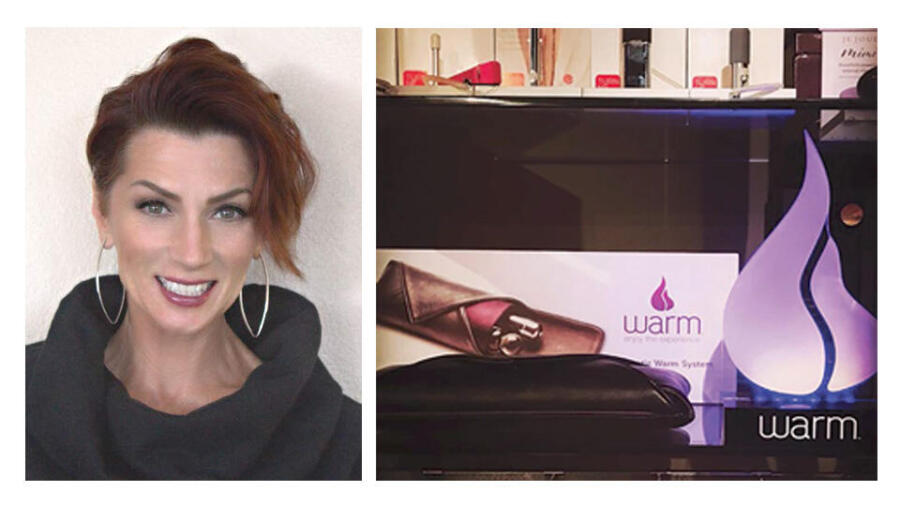The relationship that manufacturers enjoy with retailers is a vital part of the pleasure products sector. Even when they are selling pleasure products directly to consumers via their websites, manufacturers need retailers. And whether a company is manufacturing vibrators, anal toys, BDSM products or lubricants, manufacturers rely on retailers (both brick-and-mortar and e-commerce) not only to carry and sell their products, but also, for feedback on everything from designs and packaging to promotional opportunities.
Kimberly Harding, sales manager for Sportsheets International, stressed that paying close attention to the opinions of retailers is more than a good idea for manufacturers of pleasure products — it is essential.
Because manufacturers are not involved in the ground-floor work of selling items in person directly to consumers, I believe that collaboration and communication with (retailers) is essential to knowing and understanding consumers. —Alicia Sinclair, COTR, Inc.
“The feedback we receive from retailers and distributors is an invaluable tool,” Harding told XBIZ. “From conception of ideas to the release and reception of those products at the store level, the feedback is absolutely vital. When we’re open to that feedback, we’re able to retrieve information as to what sells and what products catch the end-user’s eye.”
Manufacturers, Harding added, must make sure that retailers are as knowledgeable as possible about their products.
“We support our retailers and distributors with staff trainings and educational material,” Harding explained. “It’s important they have complete knowledge of our products, why we created a product and tools (used to) sell them. When we cannot be there in person, we support our retailers with giveaway product and goody bag items — and when we can be there in person, we are thrilled to be a part of their event.”
Kathryn Hartman, sales and marketing director for Nasstoys, noted that product-related suggestions from retailers are always welcome.
“Some of our best product development has been the result of input from the front lines,” Hartman told XBIZ. “Retailers get great new ideas from consumers all day long. We take their suggestions and requests seriously, and then, we deliver.”
Hartman added, “Nasstoys has always embraced and supported our distributors’ customers through their sales staff, and we cannot stress the value of distributor events and trade shows enough for establishing and building relationships and brand loyalty.”
Alicia Sinclair, founder and CEO of COTR, emphasized that the face-to-face interaction brick-and-mortar retailers have with consumers makes their feedback crucial for manufacturers.
“Because manufacturers are not involved in the ground-floor work of selling items in person directly to consumers, I believe that collaboration and communication with (retailers) is essential to knowing and understanding consumers,” Sinclair told XBIZ. “I always involve retailers and distribution partners on early product design ideas and solicit feedback regularly once products have launched.”
Sinclair continued, “Every partner is valuable in the process of getting our products into the hands of consumers, and their unique feedback can often bolster the success of an item. Different points of view from each contributing member of the process affects our packaging and product development as we seek to bring quality, thoughtful products to market that all our customers can appreciate.”
The more manufacturers do to educate retailers about their products, Sinclair added, the better it is from a sales and marketing standpoint.
“We provide many, many educational articles not only on how to sell our products, but also, how to answer questions about how our products work with the body,” Sinclair explained. “Additionally, we provide product training in-store, via Skype, or via phone. We also have really fun product videos that easily teach retail staff and consumers about the products.”
Kim Airs, retail sales specialist for Channel 1 Releasing, pointed to the company’s Boneyard and Rascal lines as examples of successful products that have benefitted from the feedback of retailers.
“Retailers are on the forefront of the business,” Airs told XBIZ. “Without retailers, manufacturers would not be in business. In order to successfully present the best-selling Rascal and contemporary Boneyard lines of products, we are in constant communication with our distributor and retail partners. We listened when we asked them, ‘What colors would pop on the wall?’ and came out with the signature yellow packaging of the Boneyard line. We altered the backgrounds of our glow-in-the-dark products in the Rascal line so consumers could figure out that yes, they actually glow.”
Airs added, “We are always training our retailers and distributors on the features and benefits of both our Rascal and Boneyard lines. We believe that training makes our products stand out in the crowd, which translates to stronger sales by the sales staff.”
Janine Weisberg, co-founder of Warm, Inc., recalled that from the beginning, she sought feedback from retailers.
“I started communicating with retailers during the development of Warm,” Weisberg told XBIZ. “I knew with Warm being such a unique and new concept product, the retailers themselves would best know what Warm needed for a successful end-user experience.”
Weisberg cited Victor Topaz, manager of a Pleasure Chest store in New York City, as an example of a retail expert who gave her insightful feedback when she needed it the most.
“My original design packaging for Warm would have been a disaster had I not been able to have a very valuable meeting and gotten feedback from a retail buyer,” Weisberg remembered. “Thank you, Victor at Pleasure Chest! Because of that exact meeting, we were able to completely change our design due to the feedback from that meeting. Walking the store with the sales staff was also a valuable part of our development process. Their insights and willingness to share what they need to best do their job is priceless.”
Weisberg continued, “As a manufacturer, there are so many variables to keep in mind when developing product. It’s not only important to ensure your product is top quality and consumer messaging is clear and consistent, but to also make sure retailers and/or distributors can easily manage your goods. Everything from master carton sizes, storage, check-in efficiency and interior packaging can all play a factor in how your product is received. Retailers and distributors have typically experienced it all, the good and the bad; so, their insight can help guide some of those final product development decisions to make sure what you put out is the best possible option.”








